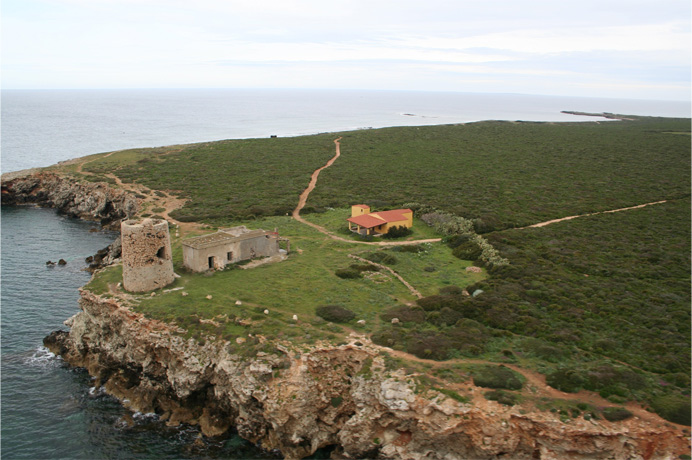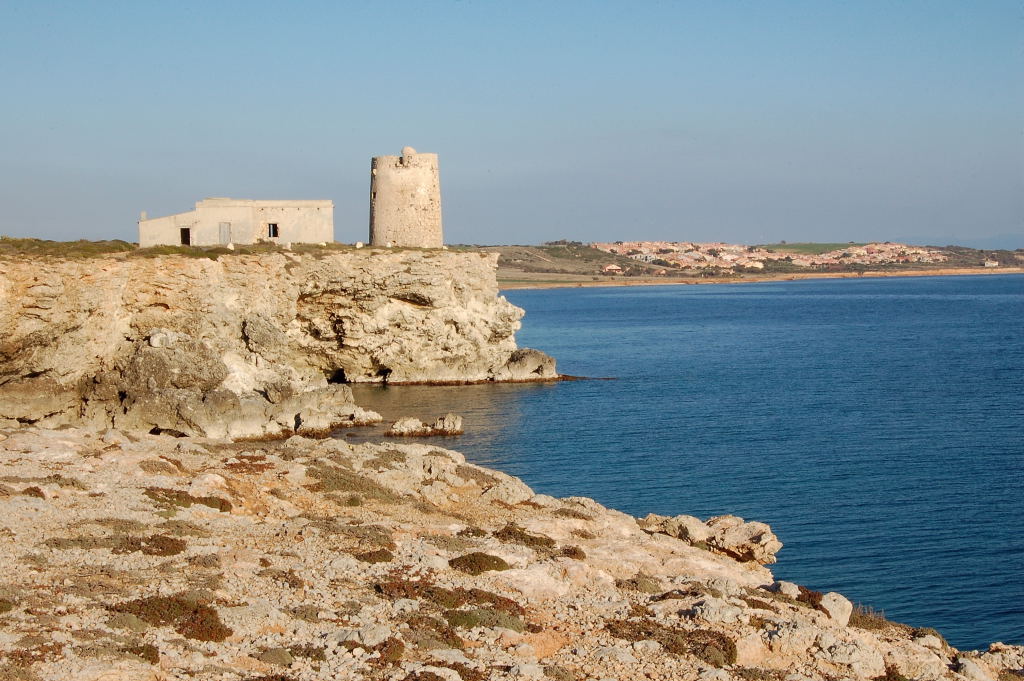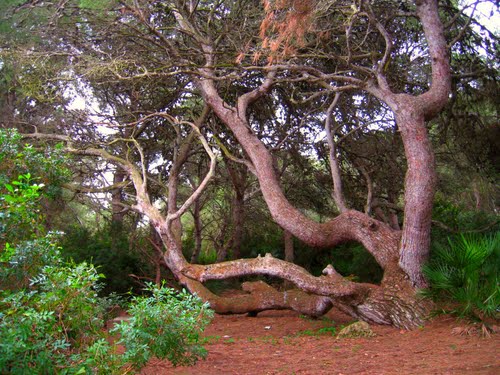
Seu Naturalistic Oasis
This post is also available in:
 Italiano (Italian)
Italiano (Italian)
The Seu naturalistic oasis is a limestone promontory with a 50-ft cliff overlooking the sea.
It covers about 284 acres and is administratively part of the Municipality of Cabras, in the province of Oristano.
The area is of particular historical interest: human settlements were already present at the time of the Nuragic civilization and it was later inhabited by the Phoenicians, the Carthaginians and the Romans; due to its strategic position, in 1550 the Spaniards built an imposing watchtower there, later armed and fortified for defensive purposes.
It then used to be the private property of Don Efisio Carta from Oristano, the former owner of the nearby ponds and the fishing facilities of Cabras; eventually, it became a WWF protected natural oasis in 1981.
FLORA AND FAUNA
The whole area features remarkable biodiversity, including the Mediterranean scrub, sea dunes, and halophytic vegetation; having long been a private hunting reserve, Seu oasis was able to preserve its pristine natural beauty and biodiversity.
On the coast, there is a rich and luxuriant Mediterranean scrub with rosemary (the one with white flowers, typical of Seu), Montpellier cistus (Cistus monspenliensis), pink rock-rose (Cistus creticus), mastic trees (Pistacia lentiscus), myrtles (Myrtus communis), narrow-leaved mock privets (Phillyrea angustifolia), wild olive trees (Olea europea “olivaster”) and fan palms (Chamaerops humilis).
There is also a small pine forest made of Aleppo pines (Pinus halepensis).
The dune vegetation is made of several species with highly developed root systems anchored to the sand while looking for water: the sea daffodil (Pancratium maritimum), sea holly (Eryngium maritimum), searocket (Cakile maritima), and knotweed (Polygonum maritimum). Some species manage to retain the sand and thus consolidate the dunes, such as cotton weed plants (Otanthus maritimus), wheatgrass (Agropyron junceum), marram grass (Ammophila arenaria), Crucianella maritima, and Ephedra distachya.
The rocky coast, featuring high salinity, lack of water, remarkable temperature variations, and wind, has welcomed the typical cock-of-the-rock vegetation: sea-lavender bushes (Limonium tenuifolium), endemic species, Camphorosma monspeliaca, and alkali heath (Frankenia hirsuta).
The seabed is one of the most varied and best preserved on the coast, featuring a rich fauna.
The symbol of the oasis is the barbary partridge, but there are also many Spanish sparrows, African stonechats, hoopoes, woodchat shrikes and red-backed shrikes, bee-eaters, calandra larks, and corn buntings. There are also buzzards, Montagu’s harriers and peregrine falcons.
Corsican gulls, great cormorants and common terns rest on the rocks, while wild rabbits, foxes, snakes and turtles are abundant in the dune areas.
This post is also available in:
 Italiano (Italian)
Italiano (Italian)
Contatti
Corso Italia, 108 - Cabras(OR)
0783 391097
info@areamarinasinis.it


